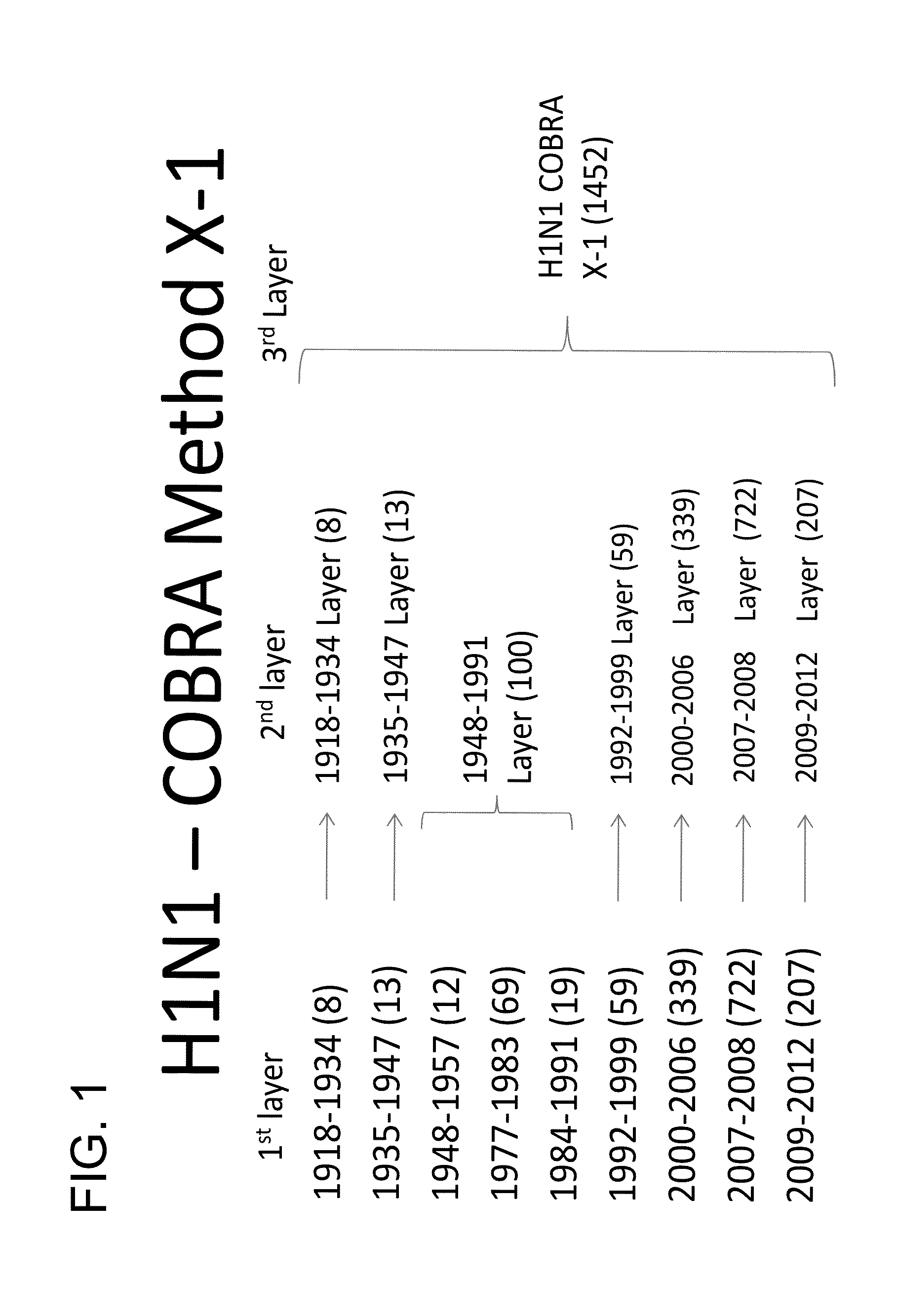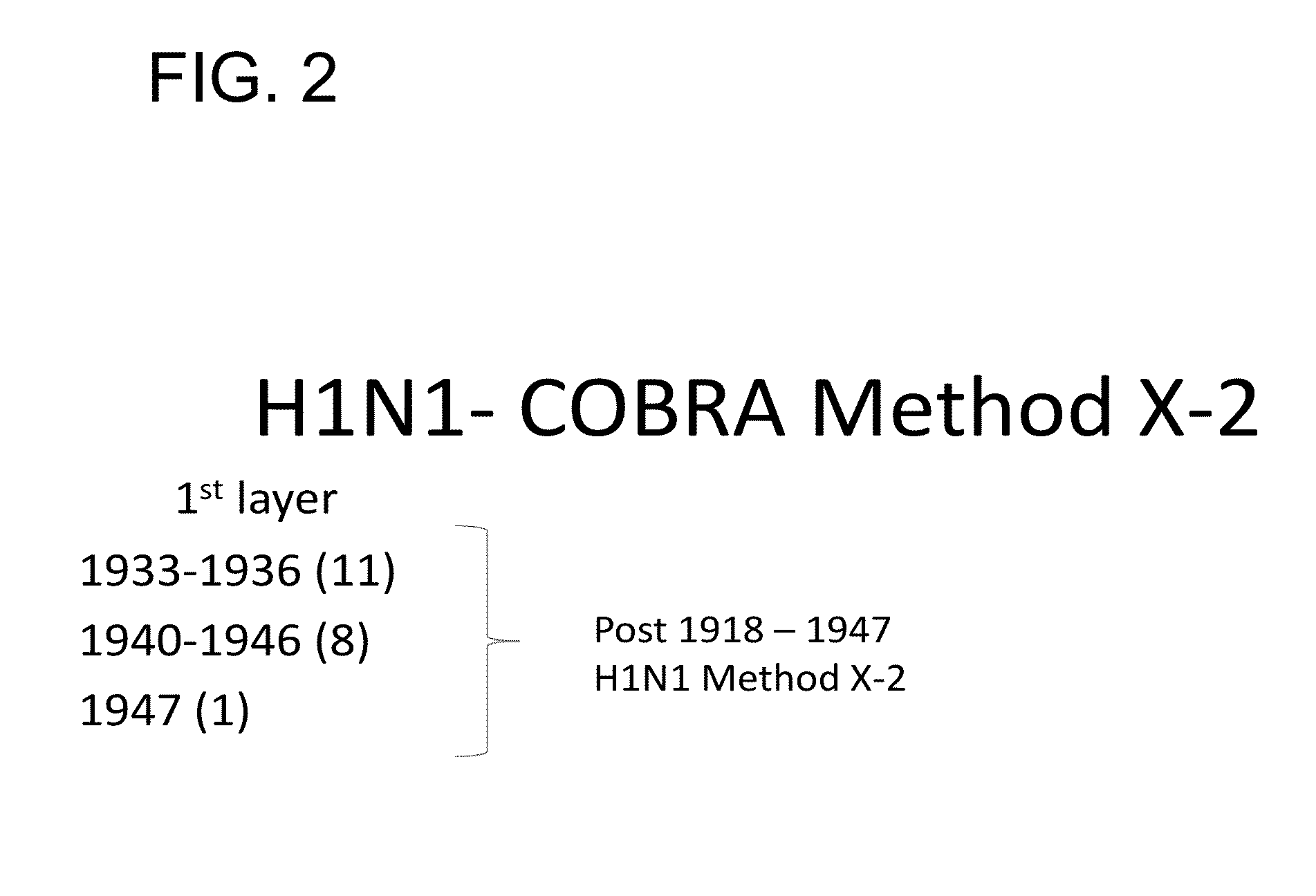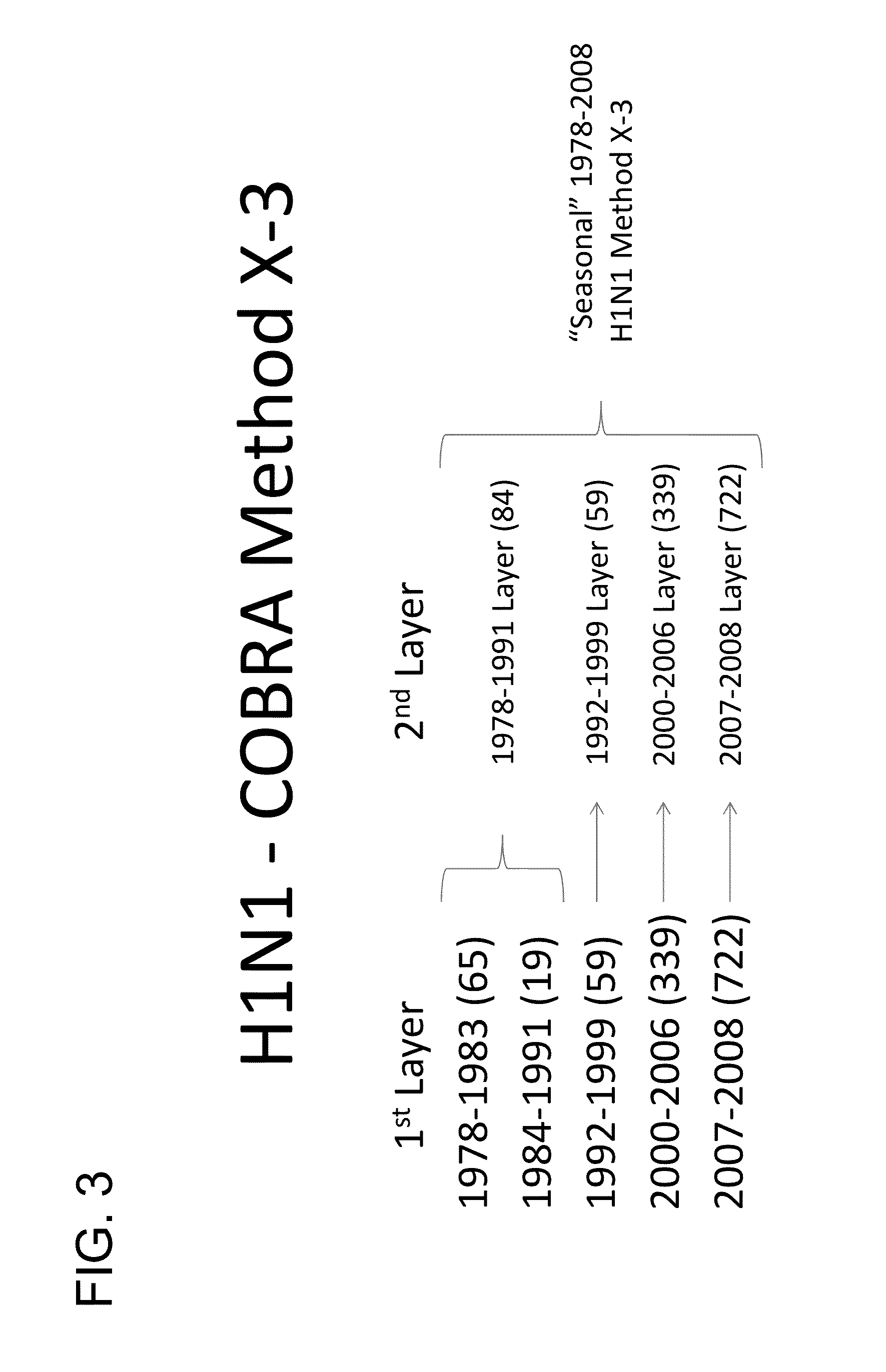Computationally optimized broadly reactive antigens for h1n1 influenza
a broadly reactive, computationally optimized technology, applied in the direction of peptides, drug compositions, etc., can solve the problems of inability to administer live virus vaccines to immunocompromised or pregnant patients, and only poor cellular immune responses
- Summary
- Abstract
- Description
- Claims
- Application Information
AI Technical Summary
Benefits of technology
Problems solved by technology
Method used
Image
Examples
example 1
Generation of COBRA Sequences for H1N1 Influenza
[0120]Influenza A H1N1 HA amino acid sequences were downloaded from the NCBI Influenza Virus Resource database. H1N1 HA proteins of isolates from 1918-2012 were used for generating consensus sequences. Seven different consensus sequences (SEQ ID NOs: 1-7) were generated using the following methods:
1. COBRA Method X-1 (1918-2012)
[0121]Sequences were organized by the date of isolation and nine primary consensus sequences were generated using isolates from 1918-1934 (8), 1935-1947 (13), 1948-1957 (12), 1977-1983 (69), 1984-1991 (19), 1992-1999 (59), 2000-2006 (339), 2007-2008 (722) and 2009-2012 (207). A second layer consensus sequence of viruses isolated from 1948-1991 was generated using the three primary consensus layers from the 1948-1957, 1977-1983 and 1984-1991 groups. As shown in FIG. 2, the final consensus sequence (third layer; SEQ ID NO: 1) was generated by alignment of six primary layer consensus sequences (1918-1934, 1935-1947...
example 2
Preparation of and Immunization with Influenza VLPs
[0129]The following methods can be used to produce and characterize influenza VLPs comprising an optimized HA. Exemplary methods for immunization of mice, ferrets and macaques are also described below (see also, Giles and Ross, Vaccine 29(16):3043-3054, 2011).
Vaccine Preparation
[0130]293T cells are transiently transfected with plasmids expressing M1, NA and an optimized HA, and incubated for 72 hours at 37° C. The M1, NA and HA coding sequences can be codon-optimized for expression in mammalian cells. Supernatants are collected and cell debris is removed by low speed centrifugation followed by vacuum filtration through a 0.22 μm sterile filter. VLPs are purified via ultracentrifugation (100,000×g through 20% glycerol, weight per volume) for 4 hours at 4° C. The pellets are subsequently resuspended in PBS pH 7.2 and stored in single use aliquots at −80° C. until use. Total protein concentration is determined by Micro BCA™ Protein Ass...
example 3
HAI Studies Following Immunization of Mice with COBRA HA-Containing VLPs
[0138]Influenza VLPs containing COBRA HA were generated as described in Example 2. Female BALB / c mice (6-8 weeks old) were vaccinated intramuscularly with 3 μg of VLPs containing Method X-1 (SEQ ID NO: 1), Method X-2 (SEQ ID NO: 2), Method X-3 (SEQ ID NO: 3), Method X-4 (SEQ ID NO: 4), Method X-5 (SEQ ID NO: 5), or Method X-6 (SEQ ID NO: 6) COBRA HA. Mice were vaccinated at week 0 (prime dose) and boosted at weeks 4 and 12. Vaccines were formulated with alum adjuvant (Imject Alum, Pierce Biotechnology; Rockford, Ill., USA). At weeks 0, 4, 8, 12 and 14, blood samples were collected from anesthetized mice via the retro-orbital plexus. At week 14, hemagglutination inhibition (HAI) titers against a panel of influenza viruses were determined. Also at week 14, mice were challenged intranasally with pathogenic H1N1 virus.
[0139]HAI serum antibody titers against a panel of H1N1 influenza strains (Puerto Rico / 8 / 1934, For...
PUM
| Property | Measurement | Unit |
|---|---|---|
| time | aaaaa | aaaaa |
| pH | aaaaa | aaaaa |
| volume | aaaaa | aaaaa |
Abstract
Description
Claims
Application Information
 Login to View More
Login to View More - R&D
- Intellectual Property
- Life Sciences
- Materials
- Tech Scout
- Unparalleled Data Quality
- Higher Quality Content
- 60% Fewer Hallucinations
Browse by: Latest US Patents, China's latest patents, Technical Efficacy Thesaurus, Application Domain, Technology Topic, Popular Technical Reports.
© 2025 PatSnap. All rights reserved.Legal|Privacy policy|Modern Slavery Act Transparency Statement|Sitemap|About US| Contact US: help@patsnap.com



